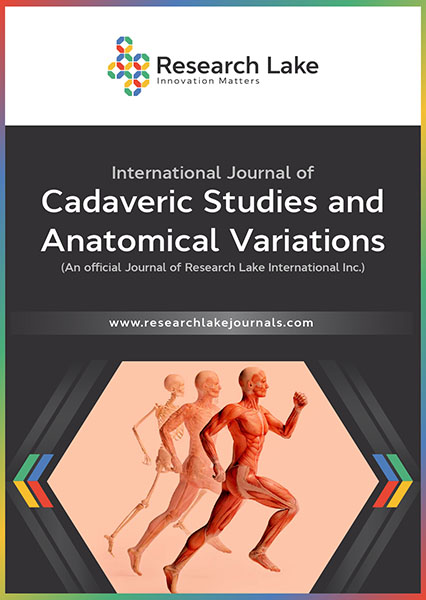Axillary Arch (Langer’s Arch) in an 80 year-old White Male Cadaver
Abstract
Recognizing the presence of an Axillary arch (Langer’s arch or muscle) can be important for clinical associations, such as when patients present with compression neuropathies and syndromes related to the upper extremity. Its presence is also relevant during surgical interventions involving the axillary fossa, such as sentinel node biopsy axillary lymph node dissection and pectoralis muscle flaps. While neglecting to identify variations rarely leads to an increase in mortality, it is essential to identify for clinical relevance. It is similarly important to anatomical instructors in the education of future medical providers. During cadaveric dissection of fifty cadavers, we observed a unilateral Axillary arch (Langer’s arch or muscle) found on the left side of an 80 year-old White Male cadaver inserting onto the tendon of the pectoralis major muscle. This anatomical variation is commonly referenced in the literature for its clinical significance. Operating surgeons, vascular interventionalists, and oncologists should be aware of this anatomical variant as it occurs while treating diverse patient populations.
Copyright (c) 2021 Ariana Sheridan, Gary Wind, Guinevere Granite

This work is licensed under a Creative Commons Attribution-NonCommercial 4.0 International License.
Copyright © by the authors; licensee Research Lake International Inc., Canada. This article is an open access article distributed under the terms and conditions of the Creative Commons Attribution Non-Commercial License (CC BY-NC) (http://creativecommons.org/licenses/by-nc/4.0/).















